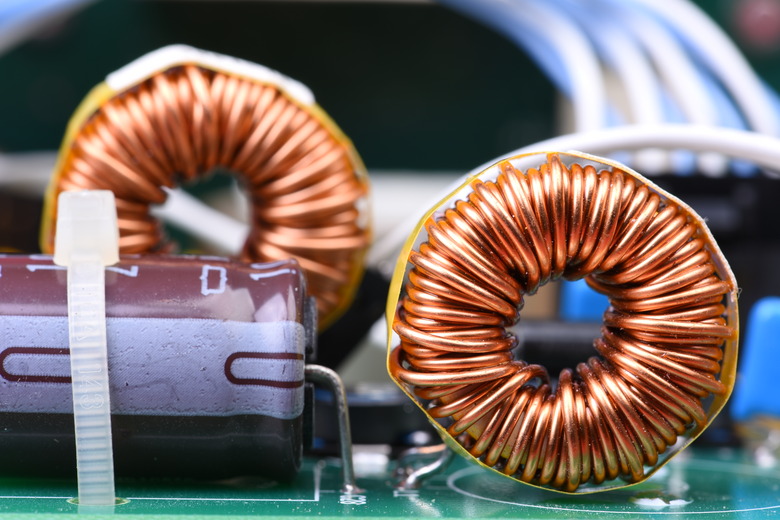How To Calculate The Force Of An Electromagnet
Engineers make solenoids – electromagnets – by twisting lengths of metal in a spiral fashion around a cylindrical template. You can determine the magnitude of that force by plugging the dimensions and other properties of the magnet based into a simple equation: F = (n X i)2 X magnetic constant X a / (2 X g2). Passing an electrical current through the solenoid results in a magnetic field that exerts force on nearby ferromagnetic objects, such as pieces of iron or steel. The joining together of magnetic and electric forces on a charged item is called the Lorentz force.
Step 1
Calculate the force by writing the equation:
F = (n x i)2 x magnetic constant x a / (2 x g2)
Where, F = force, i = current, g = length of the gap between the solenoid and a piece of metal, a = Area, n = number of turns in the solenoid, and the magnetic constant = 4 x PI x 10-7.
Step 2
Analyze your electromagnet to determine its dimensions and the amount of current you will be running through it. For example, imagine you have a magnet with 1,000 turns and a cross-sectional area of 0.5 neters that you will operate with 10 amperes of current, 1.5 meters from a piece of metal. Therefore:
N = 1,000, I = 10, A = 0.5 meters, g = 1.5 m
Step 3
Plug the numbers into the equation to compute the force that will act on the piece of metal.
Force = ((1,000 x 10)2 x 4 x pi x 10-7 x 0.5) / (2 x 1.52) = 14 Newtons (N).
Cite This Article
MLA
Banas, Timothy. "How To Calculate The Force Of An Electromagnet" sciencing.com, https://www.sciencing.com/calculate-force-electromagnet-5969962/. 13 March 2018.
APA
Banas, Timothy. (2018, March 13). How To Calculate The Force Of An Electromagnet. sciencing.com. Retrieved from https://www.sciencing.com/calculate-force-electromagnet-5969962/
Chicago
Banas, Timothy. How To Calculate The Force Of An Electromagnet last modified March 24, 2022. https://www.sciencing.com/calculate-force-electromagnet-5969962/
